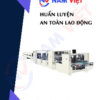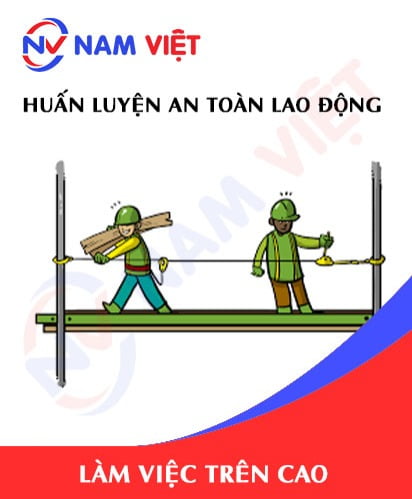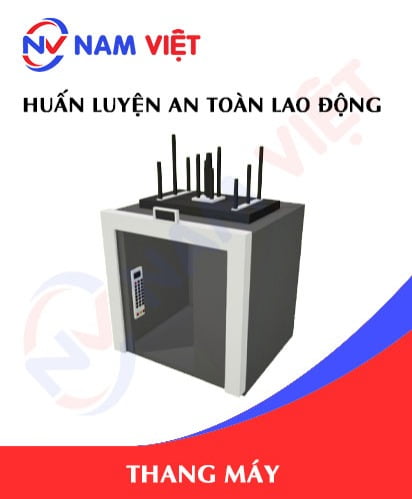Occupational safety training for operating waste paper pressing machines
99,000 ₫
Note: The above price is calculated per person and may vary depending on the number of trainees participating in the course and market fluctuations. For more accurate pricing support, please refer to the price list or contact our consulting staff directly.
Occupational safety is an important issue when operating waste paper pressing machines and needs to be addressed promptly to ensure the health and safety of workers and enhance the reputation of local businesses. The Occupational Safety Training course is one of the effective solutions to raise awareness on accident prevention for workers operating waste paper pressing machines.
Table of Contents
Toggle1. Overview of Waste Paper Compactors
a. What is a waste paper compactor?
A waste paper compactor, also known as a waste paper baler (compactor for waste paper), is a device used to process and reduce the volume of waste paper by compressing it into smaller blocks or bundles. This makes storage, transportation, and recycling easier.
Common types of waste paper compactors
- Belt-type compactor: This machine uses a conveyor belt to feed paper into the compression area. After compression, the paper is discharged as cardboard blocks or bundles.
- Vertical compactor: This type has a vertical design, where waste paper is fed from top to bottom and compressed vertically to create compact blocks.
- Horizontal compactor: This machine compresses paper from the sides, producing uniformly sized blocks of waste paper.
Benefits of waste paper compactors
- Space-saving: Reducing the size of waste paper saves storage space, helping businesses or production facilities optimize their workspace.
- Lower transportation costs: When waste paper is compressed into compact blocks, transportation costs decrease as more paper can be carried in one shipment.
- Improved recycling efficiency: Compressing waste paper makes the recycling process more efficient by making waste paper easier to handle and recycle.
- Reduced environmental pollution: Efficient handling of waste paper reduces paper waste released into the environment and increases recycling potential.

b. Operating principle of waste paper compactors
The operating principle of a waste paper compactor primarily relies on compression to reduce the volume and size of waste paper. Below are the basic steps in the operation process:
Receiving waste paper
- Loading paper: Waste paper is fed into the machine via various input systems such as conveyor belts, containers, or manually. In some automated systems, paper can be automatically loaded from containers or conveyor belts.
Cutting and sorting (if necessary)
- Cutting paper: If the waste paper is too large or not yet cut, some machines may have cutting or shredding mechanisms to reduce paper size before compression.
- Sorting: In advanced machines, paper may be sorted by type or quality before compression begins.
Compressing paper
- Compression mechanism: Waste paper compactors typically use two main compression methods:
- Hydraulic compression: Uses hydraulic cylinders to apply strong pressure to waste paper, reducing its volume and size. Hydraulic pressure can be adjusted depending on paper type and specific requirements.
- Mechanical compression: Uses mechanical components such as screws or levers to generate compression force. This mechanism is common in simpler machine designs.
- Block formation: After compression, waste paper is formed into compact blocks or bundles. The size and shape of these blocks vary depending on the machine design.
Product discharge
- Retrieving paper blocks: Compressed paper blocks are discharged from the machine. They can be stacked or packaged into bags or wraps for easy storage or transport.
- Push mechanism: The machine may use pushing or ejecting mechanisms to push the compressed blocks out.
Maintenance and inspection
- Periodic maintenance: To ensure effective operation, regular maintenance is necessary, including checking the hydraulic system, compression mechanism, and other moving parts.
- Performance inspection: Ensuring the machine compresses correctly and the paper blocks meet quality standards.
c. Industries using waste paper compactors
Packaging Industry
- Packaging factories: Use compactors to handle leftover paper, cardboard boxes, and paper packaging from production processes. Compactors reduce waste volume, making storage and transportation easier.
Manufacturing Industry
- Paper manufacturing plants: Manage waste paper from production or maintenance stages. Compressing waste paper saves space and transportation costs for recycling.
- Food processing factories: Handle paper packaging and cardboard boxes from goods used during production and packaging.
Retail and Supermarket Industry
- Supermarkets and retail stores: Process paper from product packaging, cardboard boxes, and wrapping paper. Compactors help manage large volumes of paper waste from goods and facilitate recycling.
Service and Transportation Industry
- Service companies: Office service providers, hotels, and hospitals use compactors to handle paper waste from daily operations, reducing disposal costs and improving waste management efficiency.
- Transport companies: Use compactors to handle paper from packaging and transportation activities.
Waste Management and Recycling Industry
- Waste processing centers: Use compactors to process and compress waste paper from household and industrial waste, reducing waste volume and improving recycling efficiency.
- Paper recycling plants: Use compactors to prepare waste paper for recycling, creating raw material for new paper production.
Education and Office Industry
- Schools and offices: Manage paper waste from study activities, office work, and events. Compactors help efficiently manage and recycle paper waste.
Healthcare Industry
- Hospitals and clinics: Handle paper from medical documents, medicine packaging, and other paper materials. Compressing waste paper reduces volume and disposal costs.

2. Overview of safety training for operating waste paper compactors
a. What is occupational safety training?
- Occupational safety training for operating waste paper compactors consists of sessions that provide awareness on preventing occupational accidents for workers. Those working directly with waste paper compactors belong to group 3.
- The training course helps workers recognize and avoid hazards, reducing risks of accidents while working.
REGISTER FOR OCCUPATIONAL SAFETY TRAINING SERVICE
b. Training duration
Initial safety training duration
- Total training time is at least 24 hours, including exam time.
- 8 hours of theory on policies and laws about occupational safety and hygiene
- 8 hours of theory on basic knowledge of occupational safety and hygiene
- 4 hours of theory on specialized training content
- 2 hours of practical training on specialized content
- 2 hours of theory exam at the end of the course
The safety training center will arrange the training into multiple sessions depending on worker schedules. Usually, there are 6 sessions over 3 days, provided the enterprise can allocate continuous training time.
Periodic safety training duration
- Before the occupational safety card expires, workers must undergo periodic occupational safety training with a training duration of at least 50% of the initial safety training.
Explanation: total periodic occupational safety training time is at least 12 hours, including exam time. After completing the periodic training and passing the test, workers will be reissued or have their occupational safety card extended.
c. Training content
| No. | TRAINING CONTENT | TRAINING DURATION (HOURS) | |||
| Total | Including | ||||
| Theory | Practice | Exam | |||
| I | Policies and laws on occupational safety and hygiene | 8 | 8 | 0 | 0 |
| 1 | Overview of legal documents system on occupational safety and hygiene. | 6 | 6 | ||
| 2 | Standards and technical regulations on occupational safety and hygiene. | 1 | 1 | ||
| 3 | Specific regulations from state management agencies on occupational safety and hygiene when constructing, expanding, or renovating facilities for production, use, storage, inspection of machines, equipment, materials, or substances with strict safety and hygiene requirements. | 1 | 1 | ||
| II | Basic knowledge of occupational safety and hygiene | 8 | 8 | 0 | 0 |
| 1 | Basic knowledge about hazards and harmful factors in the workplace. | 4 | 4 | ||
| 2 | Methods to improve working conditions. | 1 | 1 | ||
| 3 | Safety culture in production and business. | 1 | 1 | ||
| 4 | Rights and obligations of employers and employees; policies and regimes on occupational safety and hygiene for employees; functions and tasks of safety officers. | 1 | 1 | ||
| 5 | Safety and hygiene rules, signs, safety equipment and personal protective equipment usage; first aid skills for occupational accidents, and occupational disease prevention. | 1 | 1 | ||
| III | Specialized training content | 6 | 4 | 2 | 0 |
| Comprehensive knowledge of machines, equipment, hazardous substances; risk analysis, management of occupational safety and hygiene; safe working procedures with machines, equipment, and substances requiring strict safety and hygiene. | 6 | 4 | 2 | ||
| IV | Final safety training exam | 2 | 2 | 0 | 0 |
| Total | 24 | 22 | 2 | ||
See more training content for 6 groups
d. Occupational safety card
After completing the occupational safety training course and passing the exam, workers will be issued an occupational safety card (commonly known as occupational safety certificate group 3).
The group 3 safety card clearly shows information such as full name, date of birth, job and specific working environment. It also includes training duration, red stamp, and signature confirming course completion.
According to regulations on card issuance detailed in Clause 2 of Article 24 of Decree 44/2016/ND-CP, there are two cases:
- If the employer and employee have a labor contract, the employer must sign, stamp, and endorse the safety card for the trained group 3 employee after the occupational safety training and passing the exam.
- If the worker is freelance or temporary without a labor contract, the training unit must sign, stamp, and endorse the safety card after the worker completes the occupational safety training and passes the exam.

3. Hazards for workers operating the compactor for waste paper
Risk of getting trapped or crushed
- Description: The compactor for waste paper uses high pressure to compress paper, which can cause a risk of trapping or crushing if workers are not careful. Moving parts, compression mechanisms, and contact areas of the machine can be dangerous if not properly managed.
Risk of injury due to impact
- Description: Mechanical parts and rotating shafts of the machine may cause impacts and injuries if not used carefully.
Fire hazard
- Description: Compressing paper can generate friction and heat, leading to fire risk, especially if the paper is wet or contains flammable substances.
Noise hazard
- Description: The compactor for waste paper can produce loud noise during operation, which can harm the hearing of workers.
Risk of muscle fatigue and mechanical injuries
- Description: Heavy work and continuous operations can lead to muscle fatigue and mechanical injuries.
Health risks related to dust and chemicals
- Description: During compression and paper handling, dust may be generated and cause respiratory issues if not properly controlled. If the paper contains chemicals or dyes, additional health risks may arise.
Electric shock hazard
- Description: The compactor operates on electricity, and electric shock risk may occur if the electrical system is poorly maintained or malfunctions.
4. Accident control measures when operating the compactor for waste paper
Training and Safety Instructions
- Technical training: Provide thorough training on how to operate the machine, including safety procedures and emergency situations. Ensure all workers fully understand the machine’s functions and proper usage.
- Safety guidance: Provide detailed instructions on safety measures, including preparation steps, operation, and maintenance of the machine.
Use of Personal Protective Equipment (PPE)
- Protective gloves: Use cut-resistant and impact-resistant gloves to protect hands from trapping or impact risks.
- Safety glasses: Wear safety glasses to protect eyes from dust or debris generated during machine operation.
- Safety shoes: Use steel-toed safety shoes to protect feet from falling or impact objects.
Safe Machine Design and Maintenance
- Protective mechanisms: Ensure the machine is equipped with protective devices such as safety guards, sensors, and automatic shut-off systems when the door is opened. This helps prevent contact with hazardous machine parts.
- Regular maintenance: Perform regular maintenance to inspect and service machine components, including mechanical, hydraulic, and electrical systems. Check safety equipment to ensure proper functioning.
Work Area Management
- Safe area: Establish a safe working area around the machine and prohibit unauthorized personnel from entering. Mark hazardous zones and use barriers if necessary.
- Cleanliness and organization: Keep the work area clean and tidy to reduce accident risks from slips, trips, or obstacles.
Operating Procedures and Supervision
- Standard operating procedures: Develop and implement standard procedures for loading, operating, and handling the machine. Ensure workers comply with these procedures.
- Monitoring and inspection: Periodically monitor machine operation and check compliance with safety protocols. Detect early signs of incidents or risks to promptly address them.
Fire Prevention
- Fire alarm system: Install fire alarm systems and firefighting equipment near the machine. Ensure firefighting equipment is regularly inspected and maintained.
- Fire handling procedures: Train workers on fire response procedures and how to use firefighting equipment.
Health and Safety Management
- Health checks: Ensure workers undergo regular health checks to detect early problems related to working with the compactor.
- Health support: Provide health and safety advice and support to workers, especially regarding noise, dust, and other environmental factors.
Emergency Response
- Emergency response plan: Develop emergency plans for situations such as machine jams, fires, or work accidents. Ensure all workers know the steps to take in emergencies.
- Emergency drills: Regularly conduct emergency drills to ensure workers can respond quickly and correctly during incidents.
5. Benefits of occupational safety training
An Toan Nam Viet provides your business with the following excellent benefits after completing occupational safety training courses as regulated in Decree 44/2016/NĐ-CP on occupational safety and hygiene work. For companies, factories, and enterprises:
- Workers can identify potential accident hazards and thus take preventive measures to avoid occupational accidents.
- Your business can establish risk prevention measures in production, operation, and maintenance processes.
- Reduce costs associated with occupational safety risks.
- Uninterrupted production helps increase labor productivity and product quality.
- Comply with occupational safety laws to avoid legal risks.
- Create credibility and professionalism in all aspects, thereby enhancing your company’s brand.
Nam Viet’s training courses are solutions to prevent external hazards affecting individuals, helping them avoid dangers that may cause injuries or even death.
REGISTER FOR OCCUPATIONAL SAFETY TRAINING SERVICE
6. Customer feedback after completing training courses
An Toan Nam Viet has many years of experience accompanying various businesses across Vietnam, especially in southern provinces. This responsibility is precious to Nam Viet, so our occupational safety training is increasingly professional. The motivation for our growth comes from positive feedback and suggestions from businesses. Below are some testimonials from our partners we have served.
Hoa Đất Construction and Trading Joint Stock Company
“Nam Viet’s service helped us simplify occupational safety and complete safety documents for work processes. The consulting team was enthusiastic and timely in addressing our questions. 5 stars for Nam Viet.”
See more customer interviews after using An Toan Nam Viet’s services
7. Occupational Safety Training Capacity of An Toan Nam Viet
An Toan Nam Viet is a reputable and quality occupational safety training center in Vietnam today. Training sessions are continuously held at factories, plants, or construction sites nationwide (in all 63 provinces of Vietnam).
REGISTER FOR OCCUPATIONAL SAFETY TRAINING SERVICE
Training license for occupational safety
- An Toan Nam Viet has been inspected and certified by the Department of Safety under the Ministry of Labor, Invalids and Social Affairs, confirming qualification to conduct occupational safety and hygiene training. This further strengthens our capability in occupational safety training.

Training materials and lectures
- Before training materials are included in occupational safety training courses, they are reviewed and approved to ensure accuracy and effectiveness.
- Our instructors’ teaching methods follow the standards developed by An Toan Nam Viet, based on research and experience in occupational safety and hygiene training to maximize knowledge absorption.
Facilities
- Controlling classroom environmental factors during training enhances teaching efficiency and student learning outcomes.
- Our training facilities provide spacious classrooms meeting standards for space, lighting, and training equipment.
8. Nationwide reputable occupational safety training center
At An Toan Nam Viet, we prioritize the professional dedication to occupational safety training. We believe imparting knowledge for workers to protect themselves equips them with safety on their livelihood journey and contributes to national development.
To ensure effective training, we meticulously prepare every detail—from tools, teaching equipment to curriculum, materials, sound, and lighting.
Our safety training instructors are experts with many years of experience. Some even have research projects identifying hazards across industries and prevention methods.
The lectures are based on practical experience and delivered in an engaging, easy-to-understand manner for workers. This approach helps learners stay comfortable during training and absorb knowledge effectively. Our content strictly follows Decree 44/2016/NĐ-CP.
Thus, workers learn hazard prevention methods and how to protect themselves, applying them suitably in real work.
Our training center proudly provides reputable, professional occupational safety training services with advantages such as:
- Competitive training costs while ensuring training quality.
- Flexible training schedules adapted to company production needs.
- Quick and legal-compliant certification issuance procedures.
- Experienced instructors with many years in the field.
- Classrooms controlled for factors that impact training efficiency and knowledge absorption.
- Training materials tailored to occupational safety work in enterprises.
- An Toan Nam Viet works dedicatedly and professionally to provide accurate and fast customer support.

9. Additional occupational safety training materials
- Occupational safety materials for operating the compactor for waste paper
- Occupational safety training materials set
- Occupational safety training test set
- Occupational safety training curriculum for operating the compactor for waste paper
- Occupational safety multiple-choice test for operating the compactor for waste paper
No comments yet















Review Occupational safety training for operating waste paper pressing machines
There are no reviews yet.